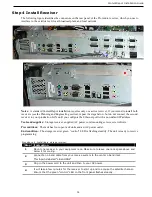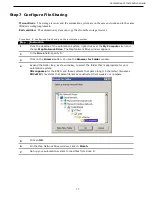
ContentDepot Installation Guide
5
About Metadata
In the ContentDepot,
metadata
describes various aspects of the audio content. The ContentDepot relies
heavily on metadata to manage and share programming, including the following:
The ContentDepot uses metadata to…
Usage
Description
Index and catalog content
Metadata provides a richer, more expressive, and
generally more useful way to catalog programming.
Properties that producers fill in to describe each piece
of content include description, subject heading, file
format, author/producer, and broadcast rights.
Enables a station to search, retrieve, and browse
content.
Subscription
Stations only receive what they request. Also enables
producers to gather usage information.
Automation
Provides the machine interface that enables the local
automation system, headend, and receivers to
interoperate.
For more information about metadata, visit the ContentDepot website at www.prss.org.
Subscription Model
The ContentDepot uses subscriptions to distribute programs to stations, as follows:
•
Stations select the programs that they wish to receive, and will receive only those programs to
which they have subscribed.
•
Only the receivers that a station assigns to a program subscription will be able to receive that
program.
•
A subscription includes episodes, promos, rundowns, and web modules. This process
provides usage data back to the producer.
•
Subscriptions at a series level automatically subscribe the station to all episodes of that series.
Automation and Playback at the Station
For pre-recorded content, a storage receiver automatically captures program audio files, and stores them in a
directory on the receiver's hard drive. At designated times—typically every few seconds or minutes—the
automation system retrieves content from the storage receiver for playout. Once a program is stored on the
receiver, the local automation system and any other host on the local network can access the file. (Access to
files on the local network depends on generally known network security limitations and the program's lifetime,
as described below).
For live content (the programs that are intended for immediate delivery), stream decoders convert IP multicast
packets into analog and digital audio and provide contact closures for cueing.








































